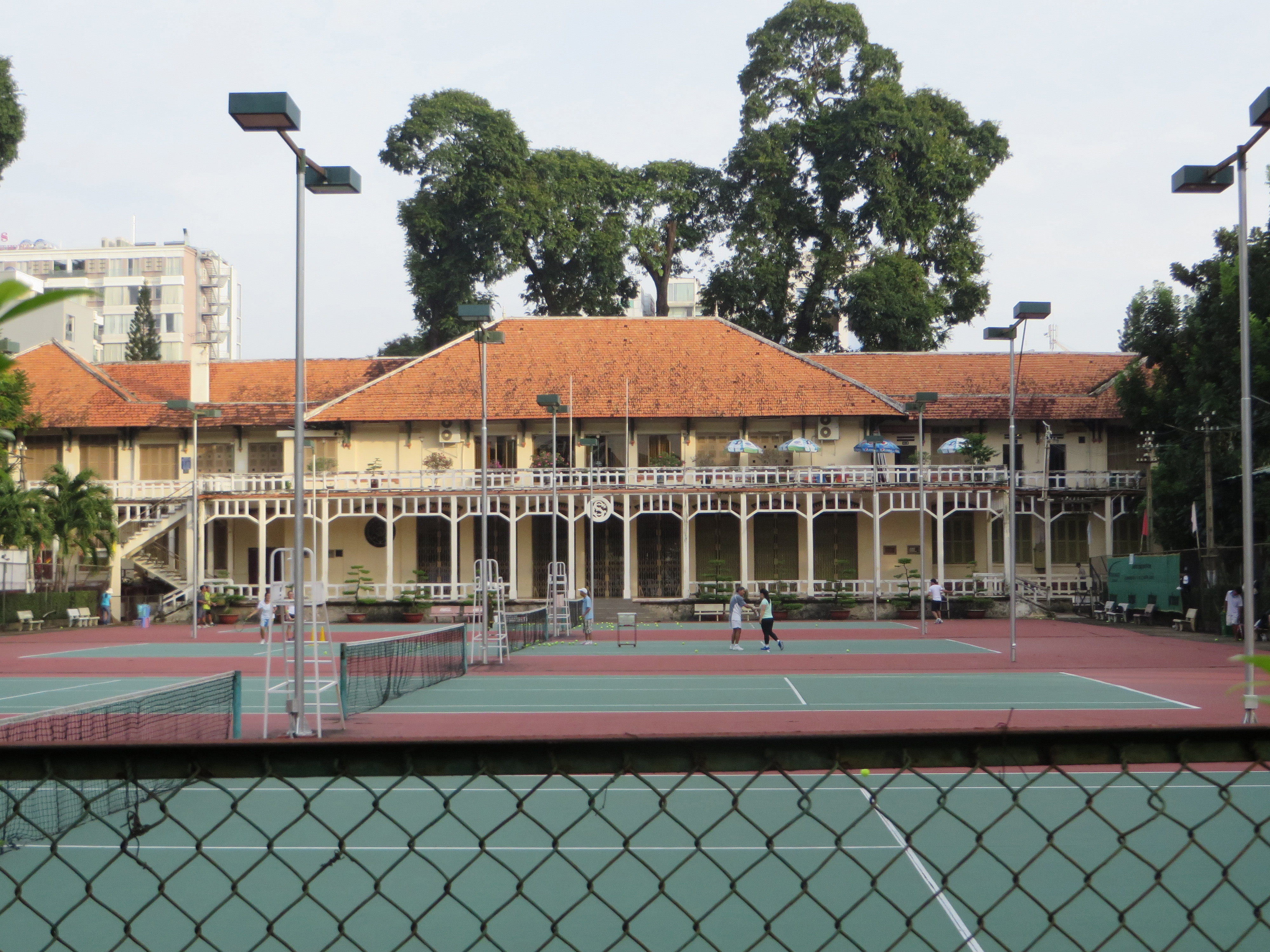
The Labour Culture Palace at 55B Nguyễn Thị Minh Khai
This article was published previously in Saigoneer http://saigoneer.com
Once a fashionable rendezvous for the elite of colonial society, the Labour Culture Palace at 55B Nguyễn Thị Minh Khai is today one of Hồ Chí Minh City’s most popular sports and recreation facilities.
Early colonial newspapers frequently encouraged French settlers to take regular exercise, and by the 1870s, in the absence of formal sports facilities, the northern corner of the Jardin de la ville (now Tao Đàn Park) had become an unofficial sports ground for athletics, horse racing, shooting and other sporting pursuits. In the 1880s, the Cercle cycliste Cochinchinois opened a vélodrome here, but by the end of the century this had fallen into disuse.
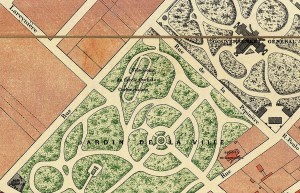
This 1890 map shows the location of the vélodrome which occupied the northern corner of the jardin de ville from the 1880s
The Cercle Sportif Saïgonnais was set up by a group of amateur fencers on 10 May 1902, “to encourage and develop the taste for and the practice of sports.” However, at the outset it was based not in the Jardin de la ville, but in a modest villa on the corner of rue Catinat and rue de La Grandière – the site currently occupied by the Catinat Building at 26 Lý Tự Trọng.
Described in a 1904 account as “a school which gives lessons in fencing, shooting, riding and a number of other sports,” this early Cercle Sportif enrolled its members by subscription, and its rather basic facilities included a fencing room, a shooting gallery and a gymnasium. Because of its educational status (its sports coaches included teachers from the nearby Collège Chasseloup-Laubat), it qualified for an annual subvention of 500 piastres from the Colonial Council.
In 1905, because “the original location could no longer meet its needs,” the Cercle Sportif was relocated to the Jardin de ville, where the municipality of Saigon placed it in charge of sports activities there.
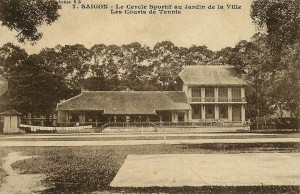
The Cercle Sportif building pictured before its reconstruction of 1925
However, the facilities inherited by the Cercle in the city park “amounted to little more than a 30-metre square pavilion and an abandoned cycling track.” This was a difficult time for the Cercle; its membership dropped to under 40 and its finances were in a poor state.
Luckily, in 1906 the municipality stepped in, funding the construction of an athletics track on the site of the old vélodrome. Two tennis courts and a football pitch followed, along with a set of roller skates which could be rented on an hourly basis by Cercle members!
In 1910, a sailing section was opened at the Sài Gòn Botanical and Zoological Gardens, next to the arroyo de l’Avalanche (now the Thị Nghè Creek).
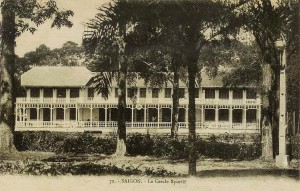
The Cercle Sportif building pictured after its reconstruction of 1925
In subsequent years, the Cercle’s membership grew rapidly, providing it with the funds to enlarge its facilities in 1909, 1913 and again in 1920.
Most of the current buildings date from a major reconstruction carried out in 1925. The rebuilt Cercle Sportif Saïgonnais at 55 rue Chasseloup-Laubat was inaugurated on 5 December 1925 at “a brilliant reception attended by the Governor of Cochinchina and key notables of the colony.”
According to a press release issued on 31 January 1926 by the Agence économique de l’Indochine, the Cercle’s upgraded facilities included “10 tennis courts, a football field with spectator stands (which may rarely be found in France) and comfortable buildings with rooms for fencing, billiards, games and reading, a dance hall, and vast changing rooms.” It concluded: “Saigon now has a club worthy of the colony, which can easily be compared with those in Shanghai, Hong Kong or Singapore.”

The Cercle’s “splendid outdoor swimming pool” pictured soon after its opening in September 1933
From that date onwards, in reflection of the Cercle’s ambition to be a “gathering point for the elite of Saigon society,” its Board of Directors selected their Honorary Presidents exclusively “from the ranks of notables, politicians, scholars and industrialists who want to give their moral support to the Cercle.”
However, what really cemented the Cercle’s reputation as the retreat of the city’s rich and famous was the opening in September 1933 of its “splendid outdoor swimming pool.”
According to the 1934 edition of Le Génie civil: revue générale des industries françaises et étrangères (Civil engineering: general review of French and foreign industries), the construction of an open-air pool had been planned as part of the 1926 reconstruction, but at that time “its realisation was impossible due to the lack of clean water.”
The pool proved so popular that by 1934, “a poolside apertif at the famous Cercle Sportif” had become an integral component of the itinerary for Vergoz travel agency tour groups arriving on the cruise ship Compiègne!
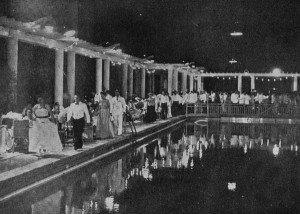
The annual Cercle Sportif Spring Ball was one of the highlights of the Saigon social calendar
In the late 1930s, a new vélodrome was opened a few blocks to the west near the Collège de jeunes filles indigènes (now the Nguyễn Thị Minh Khai Secondary School), on the site currently occupied by the Xá Lợi Pagoda.
To cater for more athletically-challenged colons who nonetheless wanted to spend time here mixing with high society, the Cercle reading room always held the latest newspapers and magazines sent from France, along with an impressive collection of over 5,000 books and journals. The Cercle also issued the bi-monthly bulletin Revue du Cercle, which was circulated widely around the city to promote its ongoing programme of activities.
Aside from the lavish receptions organised to mark the visit of foreign athletic teams, the Cercle Sportif also became famous for its annual Spring Ball, one of the highlights of the Saigon social calendar. By the late 1930s, tickets were in such demand that Le Nouvelliste d’Indochine commented sarcastically in 1938 that the ball, held that year in the Continental Hotel, had become “more of a spectacle than the manifestation of elegance it once was.”
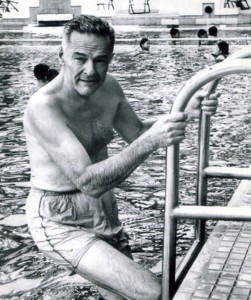
US Ambassador Henry Cabot Lodge using the Cercle Sportif swimming pool in 1963
After the departure of the French in 1954, additional administrative buildings were added. During the period 1955-1975, the Cercle Sportif continued to function as an upmarket sports club where the elite, local and foreign, gathered to drink, dine, swim or play tennis. Famous visitors of the 1960s included US Ambassador Henry Cabot Lodge and South Vietnamese politicians Nguyễn Cao Kỳ and Dương Văn Minh, the latter fêted as a skilful tennis player.
After Reunification in 1975, the Cercle Sportif was transferred to the management of the Hồ Chí Minh United Trades Union. In 1985 it was renamed Hồ Chí Minh City Labour Culture House (Nhà Văn hóa Lao động Thành phố Hồ Chí Minh) and in 1998 Hồ Chí Minh City Labour Culture Palace (Cung Văn hoá Lao động Thành phố Hồ Chí Minh), the name by which it is known today.
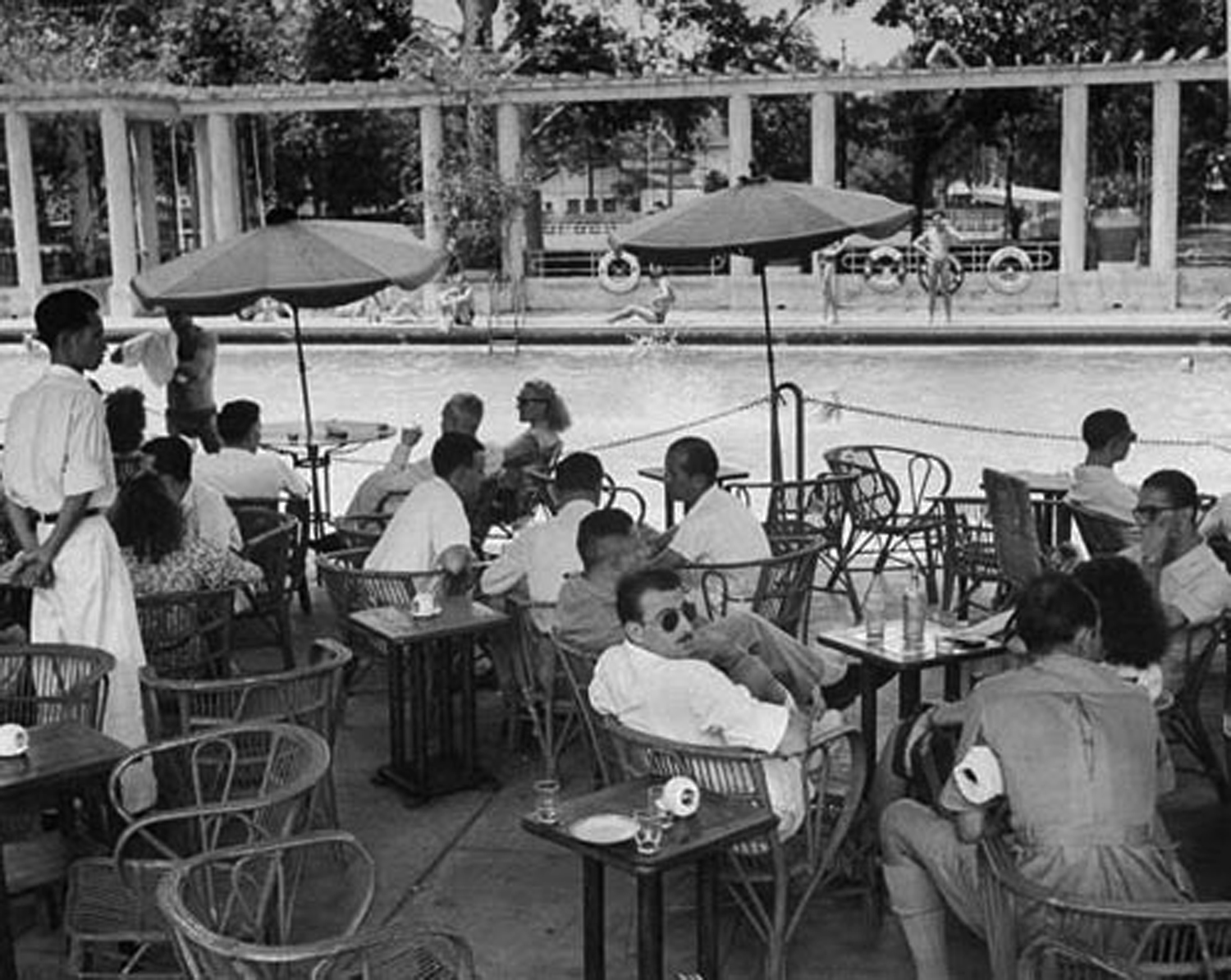
A 1948 image of the Cercle Sportif by Jack Bern
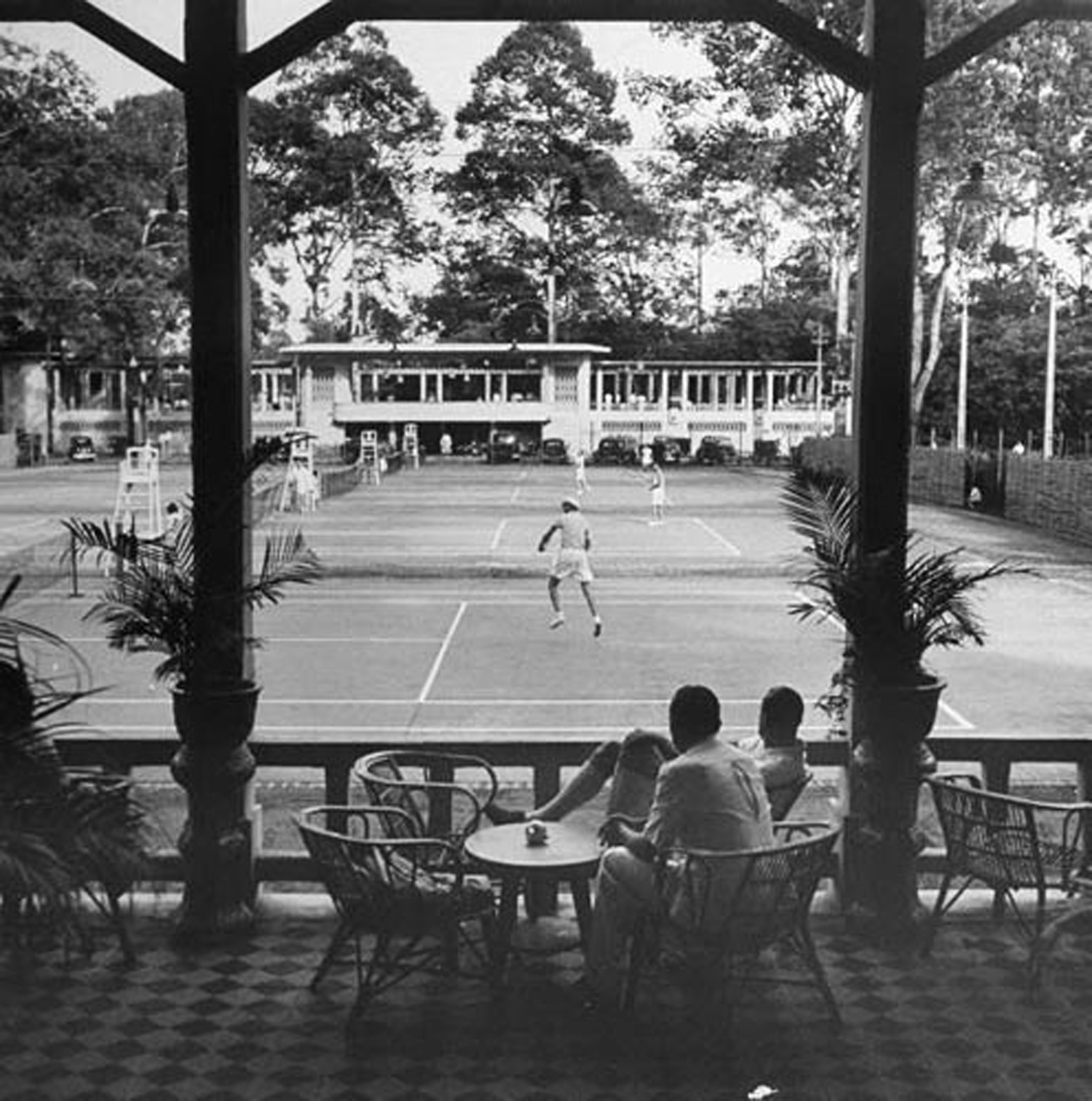
Another 1948 image of the Cercle Sportif by Jack Bern
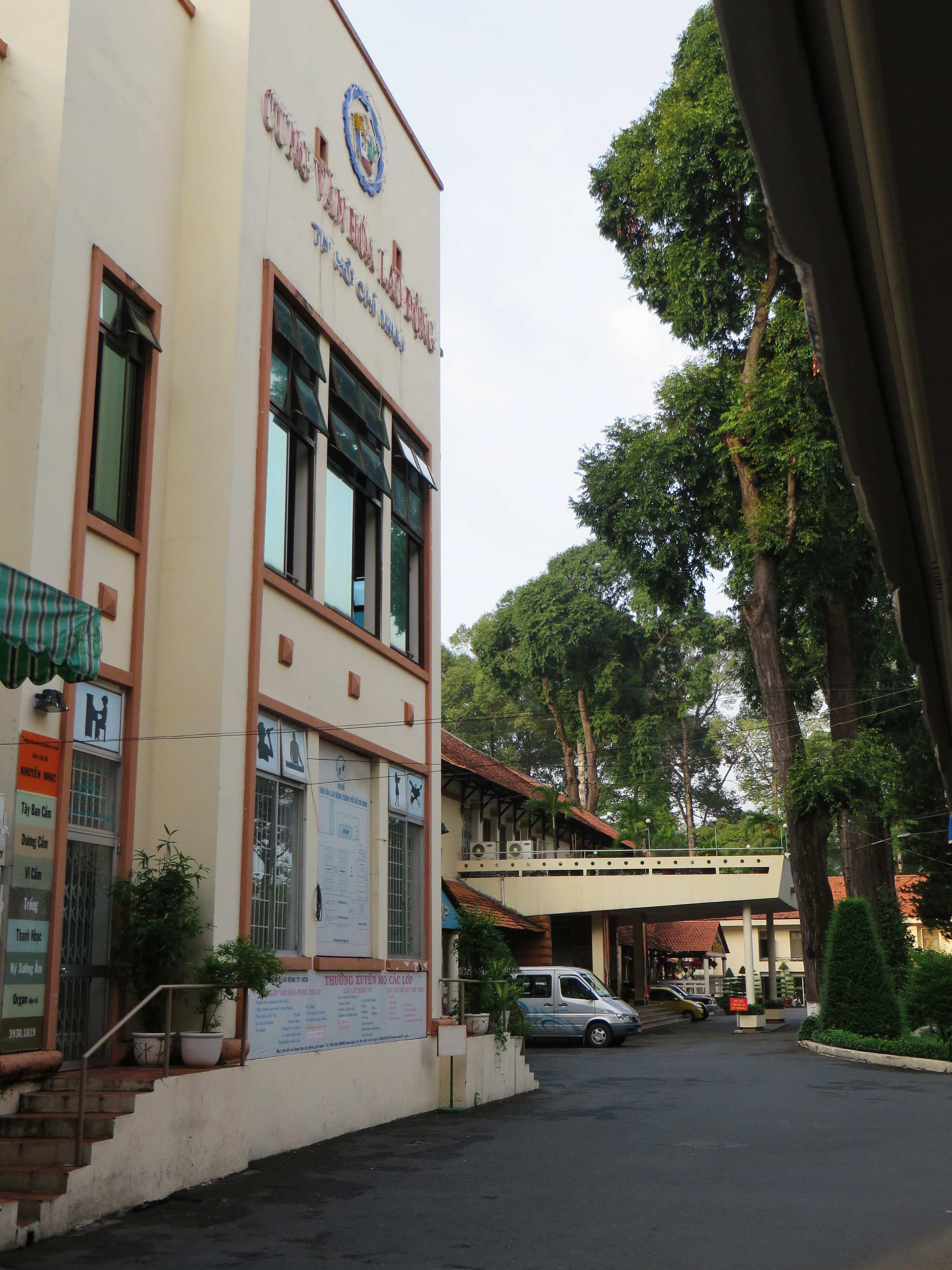
The main entrance of the Labour Culture Palace at 55B Nguyễn Thị Minh Khai
Tim Doling is the author of the guidebook Exploring Saigon-Chợ Lớn – Vanishing heritage of Hồ Chí Minh City (Nhà Xuất Bản Thế Giới, Hà Nội, 2019)
A full index of all Tim’s blog articles since November 2013 is now available here.
Join the Facebook group pages Saigon-Chợ Lớn Then & Now to see historic photographs juxtaposed with new ones taken in the same locations, and Đài Quan sát Di sản Sài Gòn – Saigon Heritage Observatory for up-to-date information on conservation issues in Saigon and Chợ Lớn.

